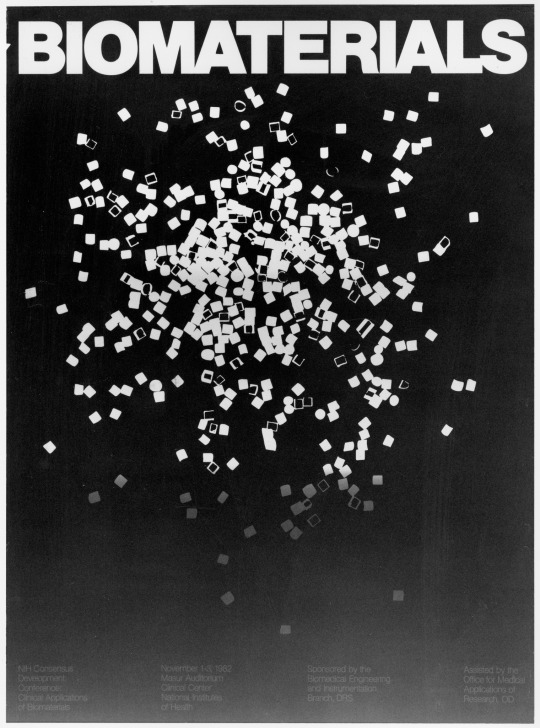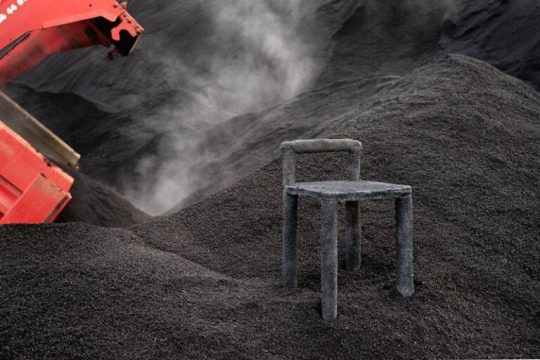#biomaterials
Explore tagged Tumblr posts
Text
"At the University of Maine, one of the world’s largest 3D printers is using sawdust from the state’s lumber industry to 3D print cozy wooden cabins.
It’s part of a move towards making 3D printing faster and more sustainable in a state where the housing shortage that has metastasized in most states around the country is dire.
It’s thought that 80,000 new homes will be needed over the next 5 years to keep pace with demand, and though it takes years for building codes to be changed, the technicians at the Advanced Structures & Composites Center (ASCC) at the Univ. of Maine hope their new toy can help address this need.
Guinness World Records certified the machine at ASCC as the world’s largest prototype polymer 3D printer, capable of creating a 600 square foot house 96 feet in length, 36 feet in width, and 18 feet tall entirely out of bio-based material at a rate of 500 pounds per hour.
In 2022, it could print the walls, floors, and roof of the house in just 96 hours, but the ACSS has been refining the design with the hope of doubling the printing speed and getting it down to a 48-hour timeline.
“When they’re doing concrete, they’re only printing the walls,” Habib Dagher, the executive director of ACSS told CNN. “The approach we’ve taken is quite different from what you’ve seen, and you’ve been reading about for years.”
Indeed, GNN has reported on a fair number of 3D printing projects, but most if not all involve printing only the walls. One fantastical exception is an Italian firm that is 3D-printing domed, beehive-like, modular concept homes inspired by the Great Enclosure in Zimbabwe.
STAND-OUT 3D-PRINTING PROJECTS:
First 2-Story Home to be 3D Printed in the U.S. Reaches for the Sky in Texas
The World’s Largest 3D Printed Building is a Horse Barn That Can Endure Florida Hurricanes
This 23-Year-Old Founder is 3D Printing Schools in Madagascar Aiming to be a ‘Stepping Stone’ for the Community
A Startup Is Using Recycled Plastic to 3D Print Tiny $25,000 Prefabricated Homes in LA
The ASCC is calling the house design the BioHome3D, and says it’s rare people who tour the concept version don’t ask when they “can have one up?”
The interior gives the feel of a modern Scandinavian wooden cabin, making it fit well with the Maine aesthetic. The ASCC is now doing work on how to incorporate conduits for wiring and plumbing “exactly where an architect would want them,” says Dagher.
WATCH a time-lapse video of the printer doing the job…
youtube
-via Good News Network, August 16, 2024. Video via The University of Maine, March 3, 2023.
#3d printing#housing#housing crisis#3d printed#architecture#sustainable architecture#biomaterials#maine#united states#good news#hope#Youtube
448 notes
·
View notes
Text
Bio-based materials may pose a greater health risk to some of the planet's most important species than the conventional plastics they are designed to replace, a new study has shown. Such materials are increasingly being advocated as environmentally friendly alternatives to plastics, and used in textiles and products including clothing, wet wipes and period products. However, microfibres of the materials are emitted into the environment through the laundry cycle, the application of sewage sludge as fertilisers, or the simple wear and tear of textile products. Despite increasing quantities of bio-based products being produced and sold all over the world, there has been little research to assess their potential impact on species and ecosystems.
Read more.
196 notes
·
View notes
Text

mycelium fabrication on cyanotype collage, 2024
129 notes
·
View notes
Text
A chrysalis needs to be perfect when a caterpillar or silkworm prepares to transform from pupae to winged adults. Since the insect can’t emerge until it has completely matured, any overlooked structural flaws or weaknesses may prove fatal for them. But just as important is a chrysalis’ ability to remain anchored in place—and according to a new study, when it comes to metamorphosis, a butterfly’s delicate silk threads are some of its strongest and most reliable tools. Researchers at China’s Southwestern University recently studied the life cycles of two butterfly species—Danaus chrysippus (plain tiger) and Papilio polytes (common Mormon)— and two silkworm species. When it came time for the butterfly and silkworm caterpillars to build their respective chrysalises and cocoons, the team watched as the insects each spun silk into net-like pads. Using an arm-like appendage called a cremaster, they then attached their chrysalis or cocoon to a branch.
Continue Reading.
72 notes
·
View notes
Text
#good news#construction#green construction#green technology#biomaterials#arcitecture#environmentalism#science#environment#nature#climate crisis#climate change#carbon sinks#carbon emissions#carbon sequestration#microbes#microbiology
20 notes
·
View notes
Text

BIOMATERIALS POSTER [c. 1982-89]
46 notes
·
View notes
Text
Using mycelium to create a self-healing wearable leather-like material
A pair of biotechnologists at Newcastle University, working with a colleague from Northumbria University, all in the U.K., have developed a way to use mycelium to create a self-healing wearable material. In their paper published in the journal Advanced Functional Materials, Elise Elsacker, Martyn Dade-Robertson and Meng Zhang, describe their process and how well it worked when tested. Mycelium is…

View On WordPress
60 notes
·
View notes
Text
mixing biocrete
5 notes
·
View notes
Text
Production of concrete, metal, plastic, bricks and asphalt greater than mass of living matter on planet. The amount of plastic alone is greater in mass than all land animals and marine creatures combined
https://www.theguardian.com/environment/2020/dec/09/human-made-materials-now-outweigh-earths-entire-biomass-study
#biomass#biomaterials#weight#earth#concrete#metal#bricks#ausgov#politas#auspol#tasgov#taspol#australia#fuck neoliberals#neoliberal capitalism#anthony albanese#albanese government
5 notes
·
View notes
Text
Additive manufacturing, also known as 3-D printing, is a transformative approach to industrial production that is making lighter, stronger parts and systems a possibility.
This article will delve in the concept of additive manufacturing, its types, and the materials used in additive manufacturing.
What is the additive manufacturing?
Additive manufacturing is processes used to create a three-dimensional object by laying down successive layers of material under the control of a computer. Objects created can be of almost any shape or geometry and are created from digital model data. It is intended to construct a part from scratch but raw material, using digital data coming from a CAD file.
The familiar term of additive manufacturing is 3D printing. This is a popular type of additive manufacturing.
#science#materials science#engineering#materials science and engineering#materials#metals#polymers#composites#ceramics#biomaterials#3D printing#additivemanufacturing
2 notes
·
View notes
Text
SUSTITUTOS DEL PLASTICO
los nuevos biomateriales: algas, bacterias, leche, hongos, moluscos, kombucha o subproductos de la industria entre otros pueden llegar a ser sustitutos del plástico y de otros componentes derivados del petróleo.

2 notes
·
View notes
Text

New plant-based glitter shows no harm to soil organisms
Plastic pollution is everywhere. Each year, over 368 million metric tons of plastics are produced with over 13 million metric tons of it ending up in the soil where it can be toxic to wildlife. Researchers are particularly worried about the environmental impacts of 'microplastics' which are small plastic particles less than 5 mm in size. Microplastics can be produced from products like glitter or when larger objects, including water bottles, break down into smaller and smaller pieces once they're in the environment. Due to their small size, animals can eat microplastics, mistaking them for food, which can cause starvation and malnutrition as well as abrasions to the gastrointestinal tract.
Read more.
#Materials Science#Science#Polymers#Plastics#Pollutants#Glitter#Waste#Environment#Biomaterials#Plants#Cellulose#University of Melbourne
62 notes
·
View notes
Text


Mycelium fabrication on cyanotype collage, 2024
33 notes
·
View notes
Photo

my morning is good, the HPLC worked perfectly until 2pm — then the instrument errors appeared again, so i’ll let the machine rest overnight, then afternoon, i processed my data and it was unexpectedly good 🥰 i also learned the conditions on when not to use the y-intercept in the calibration curve (i found a reliable source)… hence, my data i think is ready for the article our german colleagues are preparing for next month’s submission, i’ll start writing my part 💙🤍❤️ tom I’ll continue with my protein experiments —- super tired today from begging to the HPLC to start working again 😜 hence, i decided to have dinner at Leo d’Or at the centre-ville, sashimi is ❤️🍣 awesome blue sky too 💙 i look so tired in the 3rd photo haha 😂 goodnight everyone 😘 #amazingadventuresofbeaujethro #research #science #engineering #materials #biotechnology #chemistry #physics #biology #filipinoscientist #mulhouse #hplc #alsace #hautrhin #france #biomaterials (at Mulhouse, France) https://www.instagram.com/p/CpBFrxzL48f/?igshid=NGJjMDIxMWI=
#amazingadventuresofbeaujethro#research#science#engineering#materials#biotechnology#chemistry#physics#biology#filipinoscientist#mulhouse#hplc#alsace#hautrhin#france#biomaterials
4 notes
·
View notes
Text
youtube
#Osteoclasts#osteoblasts#epigenetic regulation#long non-coding RNAs#lncRNAs#bone remodeling#titanium implants#nanotopography#bone regeneration#implant integration#bone healing#osteoimmunology#epigenetics#cellular interactions#biomaterials#tissue engineering#orthopedic research#regenerative medicine#gene expression#implant materials.#Youtube
0 notes
Text

Submit Your Abstracts: Track 16: Nano-CT Characterization of Dentinal Tubule Occlusion 4th International Dental, Advanced Dentistry, and Oral Health UCG Congress from september 9-11, 2025, in Lisbon, Portugal Submit here: https://dental.universeconferences.com/submit-abstract/ Abstract submission Deadline December 31 2024
#NanoCT#DentinalTubules#DentalResearch#Biomaterials#OralHealth#Microscopy#DentalScience#ToothRestoration#MaterialsCharacterization#DentalInnovations
0 notes